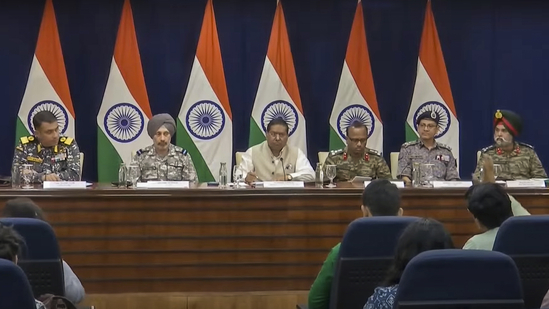In a dramatic escalation of cross-border hostilities, India successfully intercepted a series of Pakistani missiles targeting key military installations in Jammu, Pathankot, and Udhampur late Thursday night. The missile and drone attacks came in retaliation just hours after India launched preemptive strikes on Pakistani air defence infrastructure, including the reported neutralization of a major system in Lahore.
As the strikes unfolded, large-scale blackouts were reported across northern India, spanning multiple cities from Punjab to Rajasthan. Over 15 urban centers, including Srinagar, Chandigarh, and Bhuj, faced sudden power outages in what officials described as a strategic defensive response to potential aerial threats.
High-Stakes Counter-Offensive by Indian Armed Forces
In response to the incoming threats, Indian armed forces mounted a swift and effective counter-offensive utilizing both kinetic (missiles, air-to-air systems) and non-kinetic (electronic warfare, jamming) capabilities.
The Ministry of Defence confirmed late Thursday that all hostile threats were “neutralized without casualties or material damage.” According to official sources, Indian Air Force and Army units were on high alert following intelligence inputs regarding possible retaliatory actions by Pakistan.
“Our systems worked seamlessly. The attempted strikes were intercepted before they could inflict damage. Civilian safety and military integrity were preserved,” a senior Defence Ministry official told The Indian Express.
Pakistani Drones and Missiles Target Northern Military Hubs
Pakistani strikes appeared focused on strategic military hubs—especially in Jammu and Kashmir raising concerns of a deliberate escalation along India’s most volatile border region. Sources reported that drones were detected over multiple western sectors, with air defence teams successfully deploying countermeasures, including anti-drone nets and GPS jamming technologies.
Missile interception systems around Udhampur and Pathankot were activated following radar alerts. The heightened response suggests that India’s early warning network and surface-to-air missile defence grid functioned with high efficiency during the crisis.
Blackouts as a Shield: Tactical Response or Precaution?
The sudden power blackouts across Punjab, Rajasthan, and other frontier states have raised questions among civilians. However, officials emphasized that these were tactical blackouts, aimed at minimizing visibility for incoming drones and missiles.
“Reducing light signatures during a possible aerial strike is a known precautionary measure. It helps confuse incoming guided weapons and protects civilian and military infrastructure,” a senior Indian Army official said.
Cities that experienced blackouts included Amritsar, Ludhiana, Jalandhar, Jaipur, and Bikaner, among others. Power was restored in most areas within a few hours after the threat level was downgraded.
India’s Preemptive Strikes on Lahore: What Sparked the Attack?
The latest Pakistani attack appears to be a direct response to Indian operations earlier in the day, when precision airstrikes were carried out on Pakistani air defence radars and missile sites. One of the most significant targets was a reported air defence node in Lahore, which, according to Indian officials, had been “neutralised.”
India justified the operation as a preventive move amid growing intelligence of militant mobilization and Pakistani aerial activity near the Line of Control (LoC).
Diplomatic Channels Open, But No Formal Talks
Despite the rising tensions, diplomatic communication hasn’t entirely broken down. Sources indicate that India’s and Pakistan’s National Security Advisors (NSAs) remain in contact, although an official clarified this “doesn’t mean talks are underway.”
This dual-track approach—military readiness combined with limited backchannel dialogue suggests that both sides may still be exploring ways to contain the situation, even as hostilities unfold on the ground and in the air.
What Happens Next: A Fragile Peace or Further Escalation?
While Thursday night’s events underscore the volatility of Indo-Pak relations, defence analysts caution against assuming that the worst is over.
“This is a precarious moment. Any miscalculation can spiral into a broader conflict,” said a retired Air Marshal. “Both countries have demonstrated military capability and political will. What’s needed now is de-escalation and communication.”
For now, the Indian government has elevated threat levels across all western command areas and maintained full operational readiness.
The interception of Pakistani missiles and the imposition of blackouts across northern India mark one of the most serious military flare-ups in recent years. As citizens await further updates and hope for de-escalation, the situation remains tense, with armed forces on both sides maintaining a high level of preparedness.










